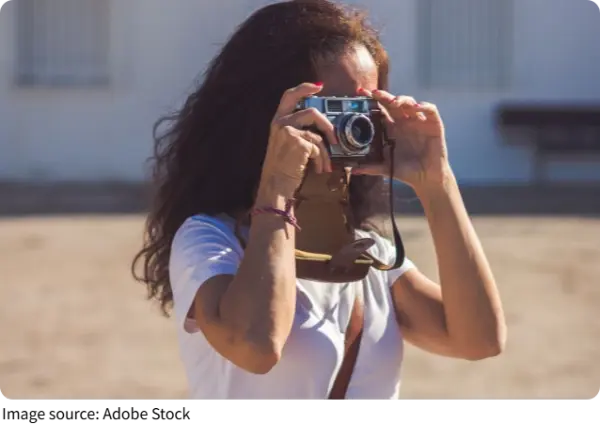Keep It Sharp

Blurry photos happen to everyone—whether you're using a phone, a beginner’s DSLR, or anything in between. But don’t worry, sharp images aren’t reserved for professionals. With just a few tweaks to how you shoot, you can turn your snapshots into crisp memories.
In this guide for Lykkers, we’ll walk you through easy ways to avoid blur, whether you're capturing fast-moving kids or a quiet mountain view. Let’s sharpen your skills—literally!
Steady Hands and Smart Angles
A major culprit behind blurry photos is movement—either from your hands or your subject. This part focuses on how you can stabilize your shot and get sharper results without needing fancy equipment.
Hold Your Camera Like a Pro
You don’t need a tripod every time. You just need to become a human tripod. Tuck your elbows into your sides, use both hands, and bring the camera close to your face or chest for extra stability. If you’re using a phone, support it with both hands and rest your arms on a table, railing, or your knees when crouching.
Breathe and Shoot Gently
Ever pressed the shutter button only to shake your phone or camera slightly? That tiny shake can soften your image. Instead, exhale gently and tap the shutter with slow, even pressure. You can also use your device’s timer or voice command to avoid touching it altogether.
Use Natural Supports Around You
Walls, benches, lampposts, tree trunks—these can all help stabilize your body and your gear. Set the base of your camera against something steady and let the environment work for you. Bonus: doing this also encourages creative angles that might surprise you.

Camera Settings That Make a Difference
Even with great technique, settings can make or break a photo. In this section, let’s explore how a few adjustments can help you capture motion, light, and focus more clearly.
Understand Shutter Speed
Shutter speed controls how long your camera's sensor is exposed to light. The slower the speed, the more likely movement will cause blur. If you're photographing something still, a slower shutter might work. But for anything that moves—or if you're holding the camera by hand—aim for 1/125s or faster. Some cameras and apps even have a "sports" or "action" mode to help automate this.
Use Autofocus Wisely
Most cameras and phones now offer different autofocus modes. Use "single-point" or "tap-to-focus" if you want to ensure the camera locks on your subject. If you're photographing people, always try to focus on the eyes—they’re the emotional anchor of any portrait.
Add a Bit of Extra Light
Low light increases the chance of blur because your camera needs a longer exposure to gather enough brightness. Try moving closer to a window, turning on a soft lamp, or adjusting your angle to catch more light on the subject’s face. Brighter scenes equal faster shutter speeds and less motion blur.
Bonus Tip: Clean Your Lens
It sounds obvious, but a smudged lens can mimic blur. Before every shoot, give your phone or camera lens a gentle clean with a microfiber cloth. It’s a tiny habit that makes a big difference.
Sharp photos don’t require a studio setup or years of training—just a steady approach and a few smart choices. By mastering how you hold your device and learning basic settings like shutter speed and focus, you’ll start seeing crisper results right away.
Remember, Lykkers, photography is part technical and part personal. The more you practice these small changes, the more natural they’ll feel. And soon, those blurry moments will be a thing of the past—replaced by memories captured in beautiful, clear detail.

 · Lifestyle Team
· Lifestyle Team